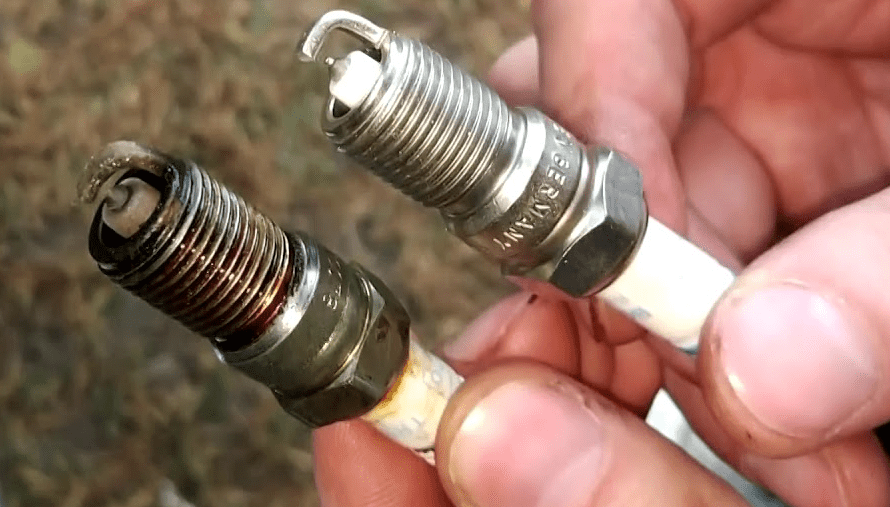The same symptoms of engine malfunction may be due to different causes. One of them is the condition of the spark plugs (spark plugs). Traditionally, the check begins with them, because the diagnosis does not require either a long time or special equipment. The only thing you need for an adequate assessment – knowledge of the signs of spark plug failure.

REASON FOR CHECKING
Unscheduled check of the spark plugs is made when the first alarming signs in the work of the car appear:
- difficulties with starting: the car does not start at all or starts only after a long rotation of the starter;
- one of the pistons is not working: the car accelerates at idle and jerks when driving;
- increase in fuel consumption due to its irrational combustion;
- Decrease of power and deterioration of acceleration dynamics.
If measures are not taken in time, the use of a faulty sealing system can lead to an accumulation of fuel in the combustion chamber and its subsequent detonation, which can cause damage to pistons, connecting rods, crankshaft, blockhead, or other engine components. Therefore, at the first suspicion of incorrect operation of the timing belt, it is necessary to immediately take a spark plug wrench in your hands.
STAGES OF DIAGNOSTICS
Even before unscrewing the SP, the first stage of checking its functionality is carried out. With the engine running, the high-voltage wires are disconnected from the plugs one by one. If the CVT was working, the engine will stall or start “thrashing”. When disconnecting the non-working TZ, the rpm character will not change. If, as a result of such evaluation, you managed to find the problematic spark plug at once, all you have to do is buy a new auto part, change it and make sure that the unit works steadily.
If the problem has not disappeared, the NW is unscrewed and inspected for:
- structural damage;
- carbon deposits of various colors;
- sputum.
- At the same time, each SP is once again checked “for the spark”: putting a side contact to the “ground”, start the engine. No blue spark will appear on a “dead” SP.
WHAT DOES THE APPEARANCE TELL
Sometimes the failure of the NW is a consequence of more “underlying” problems. In many cases, their nature can be determined by the external appearance of the gland.
A properly functioning gland has a silver-colored skirt and a dry surface. An excessive amount of soot indicates incorrectly set ignition or carburetor settings, as a result of which excessive (unburnt) fuel is deposited on the electrodes.
Soot or oil is a sign of “cold” NW, white or gray insulator indicates constant overheating. Aluminum buildup occurs due to early ignition. The most critical color, black, indicates serious problems in the engine: oil leaks that cause “soot” deposits. An even more alarming symptom is a coating of liquid grease on the NW elements. In this case, it is necessary to immediately contact specialists to assess the condition of valve caps, rings, and piston groups. Prolonged oil leaks and, as a consequence, insufficient lubrication of the rubbing parts, are fraught with “jamming” of the engine.
HOW TO REPLACE SPARK PLUGS
In case the malfunction is in the NW, it is not difficult to replace it:
- blow out the engine with compressed air – clean the surface of dust;
- disconnect the high-voltage wires (if any – individual ignition coils);
- smoothly unscrew the NW with a spark plug wrench;
- check the cleanliness of the plug wells;
- carefully insert a new NW;
- ensure to hit the threads and screw in the part with moderate force;
- connect the elements of the ignition system;
- start the car and “listen” to the engine.
